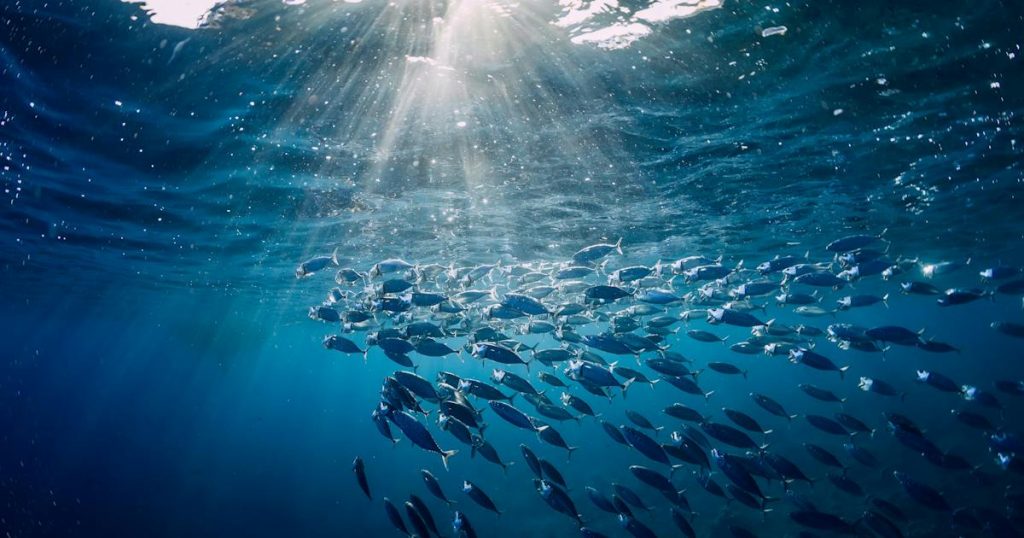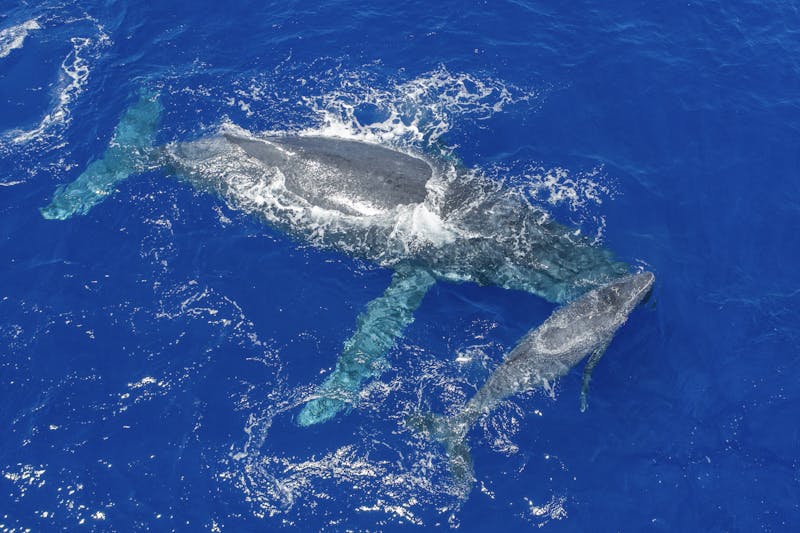Amid growing ocean threats, a surge of innovative solutions
4 min read
Across the globe, climate change, pollution and overfishing are endangering our oceans. This summer, an ocean heatwave shattered records —
reaching triple digit hot tub temperatures in one location. Yet alongside dire headlines about how climate change and other threats are altering ocean ecosystems, there are stories of ingenuity and collaboration, and a deepening understanding of the
vast, often mysterious, marine ecosystems that make life on Earth possible.
In the final weeks of the year, Conservation News is reflecting on some of our most noteworthy stories about ocean conservation. From an innovative approach to protecting Pacific waters, to the launch of a new program that is reintroducing threatened sharks back into the wild, here are some big ideas and groundbreaking efforts that stood out this year.
How an extraordinary new effort is giving sharks ‘a fighting chance’
Zebra sharks are endangered in Southeast Asia because of overfishing and habitat loss. © Alex Kydd
This year, in a global first, three zebra shark pups became the first endangered sharks ever to be bred in captivity and released into the wild. They’re part of a bold plan to bring sharks back from the brink of extinction. For decades, captive breeding programs have successfully reinvigorated struggling populations of orangutans, California condors and other wildlife. But the approach had never been tried with marine species. “Witnessing those first zebra sharks swim away was simply electrifying,” said Mark Erdmann, who leads Conservation International’s Asia-Pacific marine programs and came up with the idea for the program.
Read more here.
New study reveals seaweed’s hidden climate benefits
Seaweed may play a larger role in fighting climate change than previously thought — absorbing as much climate-warming carbon as the Amazon rainforest, according to a study from Conservation International and the University of Western Australia. But not all seaweed forests are created equal — some offer much better climate benefits than others. Conservation International researcher Albert Pessarrodona explains how protecting and restoring seaweed forests fits into the world’s climate toolkit.
Read more here.
Can shrimp farming restore mangroves? This scientist is making it happen
 Dane Klinger at a shrimp aquaculture farm in Ecuador. © Klinger
Dane Klinger at a shrimp aquaculture farm in Ecuador. © Klinger
Aquaculture is booming. Over the last few decades it’s been the fastest growing sector in food production worldwide. But in many cases, that growth has come at the expense of nature. Dane Klinger, Conservation International’s aquaculture
expert, says it doesn’t have to be this way. He developed a first-of-its-kind approach to farming shrimp that boost farmers’ yields, while conserving and restoring climate-critical mangrove forests. Conservation News sat down with Klinger
to talk about the shrimp industry, and why it’s time to disrupt it.
Read more here.
Meet the startup that’s making seaweed more sustainable
Seaweed has been heralded as a sustainable superfood, a potential source of renewable bioenergy and much more. Yet alongside its promise, are pitfalls — including a supply chain riddled with practices that can degrade the environment and hurt farmers’ livelihoods. To help change that, Conservation International invested in Coast4C, a sustainable seaweed company in the Philippines. Coast4C CEO Nick Hill and Gracie White, who leads CI Ventures’ ocean investments, share how they are building a more transparent and environmentally-sound seaweed supply chain.
Read more here.
 SEAWEED GROWING ON A COAST 4C FARM IN THE PHILIPPINES. ©
SEAWEED GROWING ON A COAST 4C FARM IN THE PHILIPPINES. ©
GRACIE WHITE
Study: Protecting the ocean benefits people and nature
The benefits of marine protected areas to nature are well documented — they help fish populations and ecosystems recover and flourish. But the impact on people living near marine protected areas has been less understood — until now. A study from Conservation International and partners uncovered evidence that marine protected areas also offer significant benefits to coastal communities.
Read more here.
‘Small rock’ making big ocean conservation impact
Commitments to protect the ocean are essential — but they’re just a first step. How countries pay for those commitments is another challenge entirely. For the small South Pacific island of Niue, that question led to an innovative approach to fund ocean protection — one that enables contributors to sponsor a square kilometer of Niue’s ocean waters for 20 years. Now, anyone can help protect this sanctuary for humpback whales, sea snakes and gray reef sharks. Conservation News spoke with marine expert Maël Imirizaldu about how this effort could pave the way for other Pacific Island nations.
Read more here.
 Niue’s waters are a sanctuary for marine wildlife, like humpback
Niue’s waters are a sanctuary for marine wildlife, like humpback
whales. © RICHARD SIDEY/GALAXIID
Mary Kate McCoy is a staff writer at Conservation International. Want to read more stories like this? Sign up for email updates. Also, please consider supporting our critical work.





